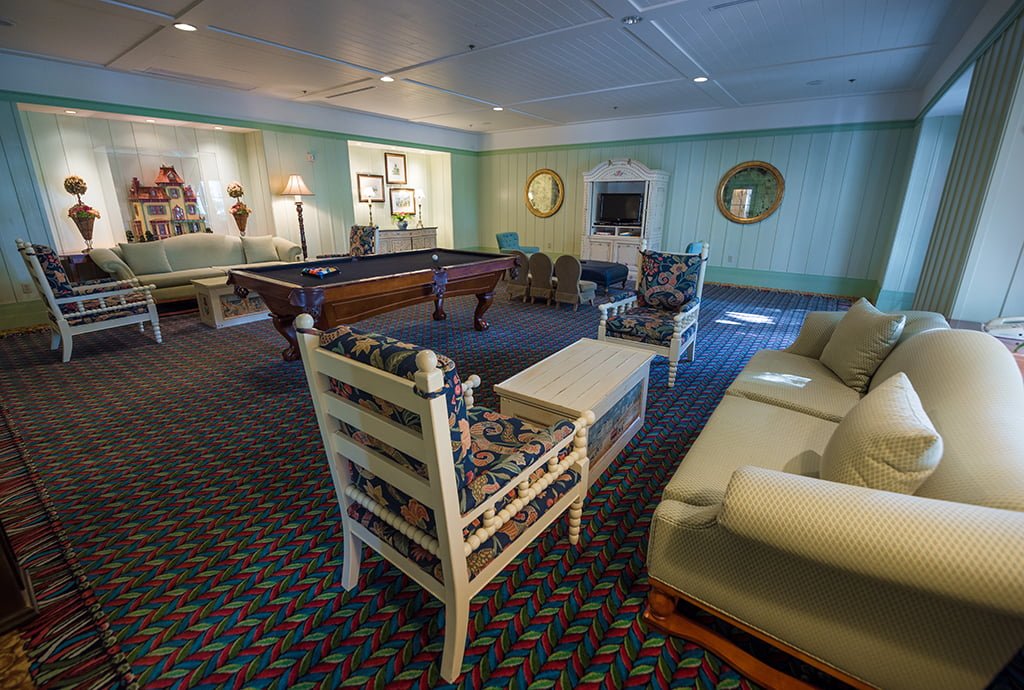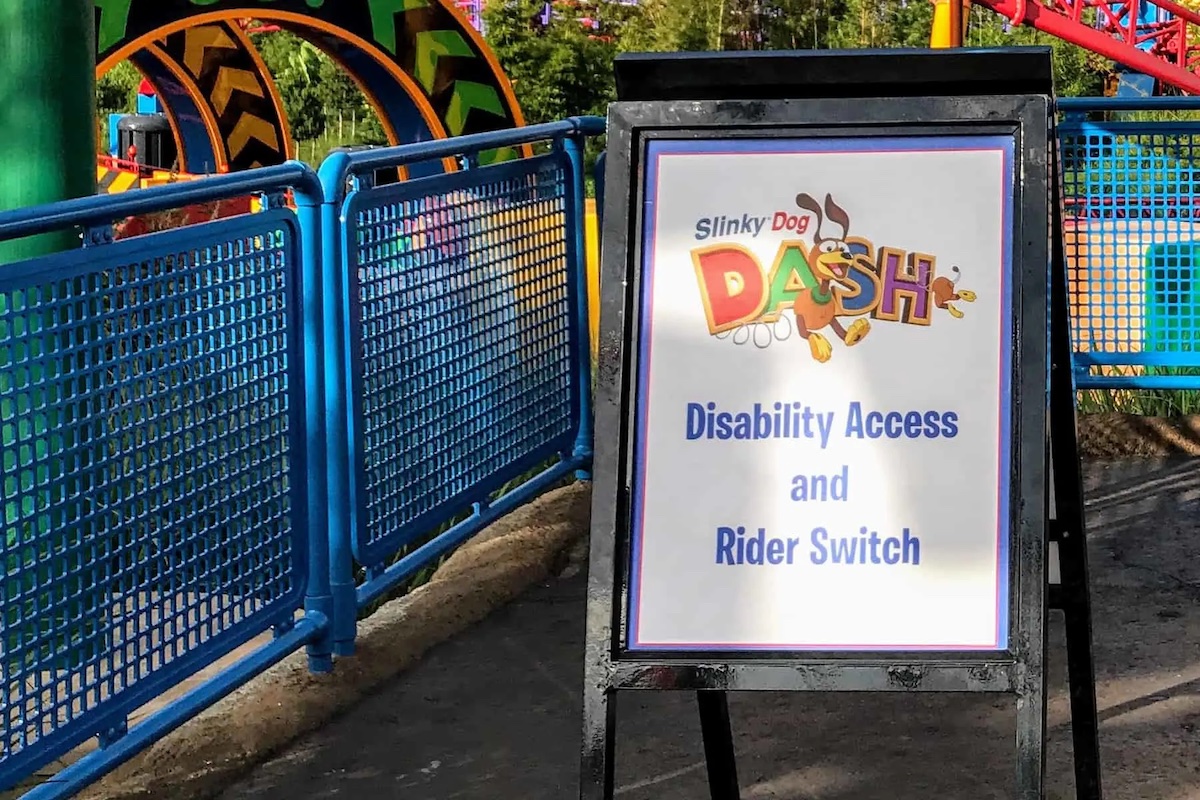Essential Tips for Visiting Disney World with a Child on the Autism Spectrum: What You Need to Know
Taking a child with autism or other special needs to Walt Disney World can be a magical experience, but it comes with unique challenges. With careful planning and the right support, Disney World can be enjoyable and accessible for all. This blog offers practical tips for navigating Disney World with a child on the autism spectrum, covering Disney's services, sensory management, and preparation strategies to ensure a smooth and fun-filled trip.
But First, Find the Right Accommodation in Orlando for Your Disney Adventure: Ensure your visit to Disney World is comfortable and convenient by choosing from a selection of accommodations on Have You Got, where we can help families visiting with children on the autism spectrum.
1. Take Advantage of the Disability Access Service (DAS)

Disney World offers a Disability Access Service (DAS) designed to help guests with disabilities, including those with autism. The DAS allows families to schedule return times for attractions, avoiding long waits in crowded queues, which can be overwhelming for children with sensory sensitivities. You can register for DAS either online (up to 30 days before your visit) or at Guest Relations in the park.
When registering, explain your child’s specific needs. The DAS will be linked to your child’s MagicBand or park ticket. You’ll then be able to make return time reservations at kiosks or via the My Disney Experience app. DAS is valid for up to 60 days, making future trips easier.
Tip: Ensure your child’s needs are clearly communicated during the DAS registration process.
Website: Disney World Guest Services – Neurodivergent
2. Prepare for Sensory Overload

Disney World can be overwhelming with its bright lights, loud sounds, and large crowds. For children with autism, this sensory overload may lead to meltdowns. Disney offers quiet zones and calming spots and sensory-friendly areas that are especially helpful for children on the autism spectrum or anyone needing a break from the hustle and bustle of the parks. These spots provide a peaceful environment where children can relax and reset.
Magic Kingdom:
- Baby Care Center: Located near the Crystal Palace in Main Street, U.S.A., this center offers quiet, air-conditioned rooms with comfortable seating.
- Tom Sawyer Island: Accessible by raft, this island offers quiet areas with shaded spots and benches, allowing children to explore or take a break in a less crowded setting.
- Liberty Square Riverboat: The slow, scenic ride on this boat offers a calm retreat as you glide along the Rivers of America.
- Pathway Between Fantasyland and Tomorrowland: Often quiet, with benches and scenic views, this path offers a tranquil space near the castle.
EPCOT:
- Japan Pavilion Gardens: The serene koi ponds, waterfalls, and peaceful gardens are perfect for children who need a calm environment to relax.
- The Seas Pavilion: The large aquarium viewing area can be quite peaceful and offers soothing water views. It’s great for a sensory break.
- Spaceship Earth Exit Area: There are quieter spaces outside of this attraction with shaded seating, perfect for a sensory break after the ride.
- The Land Pavilion (upper level): The area near the exit of Soarin’ is usually quiet and has plenty of seating for a calm rest.
Disney’s Animal Kingdom:
- Discovery Island Trails: These lesser-known, tree-lined trails around the Tree of Life are quiet and filled with nature sounds, offering a calming escape.
- Rafiki’s Planet Watch: A quieter section of the park, Rafiki’s Planet Watch offers a train ride through nature and a calm, educational environment where kids can interact with animals in a low-stimulus area.
- Kilimanjaro Safaris Exit Area: There are quiet walkways near the exit of this attraction, providing shaded, peaceful spaces for rest.
Hollywood Studios:
- Echo Lake Area: This peaceful area around the lake offers benches where kids can relax while watching the ducks. It's often quieter than other sections of the park.
- Muppet Vision 3D Courtyard: The courtyard near this attraction usually has quieter spots and shaded seating, away from the crowds.
- Star Wars Launch Bay: Inside this area, you can find a relaxed atmosphere with dim lighting and cool air, perfect for sensory-sensitive children.
General Tips:
- Baby Care Centers: Each park has a Baby Care Center that offers quiet spaces, dim lighting, and areas to take a sensory break.
- First Aid Centers: Located in all parks, they offer a calm, quiet environment where families can take a break if needed.
- Quiet Corners and Benches: Throughout all parks, especially in less crowded areas, there are benches and quieter nooks perfect for taking a break when sensory overload occurs.
These areas are not only calm but also easily accessible, making them ideal for children with autism who may need a sensory-friendly environment to rest and recharge. Disney World is also accommodating to children with special needs, and families can take advantage of the Disability Access Service (DAS) to help navigate the parks with fewer stressors.
To further manage sensory sensitivities, bring noise-cancelling headphones or earplugs to block out overwhelming sounds. Familiar comfort items such as fidget toys or weighted blankets can also help your child self-regulate.
Tip: Schedule regular breaks in these quiet spots to allow your child to decompress.
3. Preview Attractions Before Your Trip

To reduce anxiety, preview attractions in advance by watching YouTube videos of the rides. This can help children understand what to expect, and you can assess whether any specific rides might trigger anxiety or sensory overload. You can even do this with your child as part of your pre-trip planning.
Consider creating a visual schedule for each day in the park to help your child understand the sequence of events. By knowing what’s coming next, your child may feel more in control and less anxious about the unknown.
Tip: A visual schedule can also help with transitions, a common challenge for children with autism.
Website: MagicGuides – Disney World with Autism
4. Use Rider Switch and Take Breaks as Needed

The Rider Switch option allows one parent to stay with a child who may not want to (or can’t) go on certain rides while the other parent rides with another child. Afterward, parents can switch without waiting in line again, making it easier for families with neurotypical and neurodivergent children.
Taking frequent breaks is essential. If your child becomes overwhelmed, consider leaving the park for a few hours and returning later. Disney offers re-entry options, so taking a break at your hotel to relax or nap can make a big difference.
Tip: Download the My Disney Experience app to monitor ride wait times and DAS return times efficiently.
Source: The Magic for Less – Tips for Traveling with a Child on the Autism Spectrum
5. Pack Familiar Comfort Items and Snacks
Bringing along familiar snacks can be particularly important for children with autism who may have specific food preferences or sensitivities. Disney is accommodating to dietary needs, but having your child’s favourite snacks on hand can prevent meltdowns and ensure they’re eating comfortably.
In addition to snacks, pack comfort items like noise-cancelling headphones, sensory aids, or a favourite blanket or toy. Having familiar items can provide reassurance during overwhelming moments. Many parents also recommend bringing strollers, even for older children, to help them take breaks from walking.
Tip: Disney allows guests to bring outside food, so packing favourite snacks is easy.
6. Prioritise Low-Stimulation Attractions

Some attractions are more suitable for children with autism than others. For example, slower-paced rides like It’s a Small World or The Seas with Nemo & Friends are less stimulating. Conversely, avoid fast or intense rides like Space Mountain or Expedition Everest, which could trigger anxiety due to speed, darkness, and flashing lights.
Watch ride preview videos to get a sense of the ride’s sensory impact and intensity before visiting the park. Using the DAS pass will also allow your child to enjoy rides without the stress of waiting in long lines.
Tip: Watching YouTube videos of rides beforehand can give your child a preview and help you determine what they will enjoy.
7. Practice Before the Trip

If your child has never experienced an environment like Disney World, consider doing “practice trips” to places like local fairs, amusement parks, or water parks. This helps them get used to busy environments, loud noises, and waiting in lines, and allows you to identify any potential challenges ahead of time.
These outings can help simulate the experience of a Disney park, giving both you and your child an opportunity to prepare mentally and emotionally for the bigger trip.
Tip: Start with smaller trips to places with crowds to gauge your child's reactions and plan accordingly.
Planning a Disney World trip with a child on the autism spectrum involves preparation and understanding of your child’s unique needs. Disney offers several services, including the Disability Access Service (DAS) and Rider Switch, to make the experience smoother. By previewing attractions, packing sensory aids, and allowing time for breaks, families can ensure a magical experience that everyone enjoys.
Have You Got your accommodation in Orlando yet? We can help!
We've got great properties for you and we can help you before you arrive to ensure your child is prepared and enjoys their stay.
And make sure to check out our other blog on how to really be prepared for your trip!
So all you'll have to do is create great memories with your family. Happy travels!
Destination Travel Series
- South Africa, Dolphin Coast
- Spain, Marbella
- Dubai, United Arab Emirates (UAE)
- Scotland, Edinburgh
- United Kingdom, London
- Portugal, Lisbon
- France, Nice
- Italy, Piedmont
- Italy, Lecce
- Australia, NSW
- Mexico, Cozumel
- United Kingdom, Devon
- France, Haute-Savoie
- South Africa, Cape Town
- Spain, Costa Blanca
- Morocco, Marrakesh
- USA, Disneyworld, Florida
- Spain, Gran Canaria
- Israel
- South Africa
- Spain, Barcelona
- France, Paris
- Spain, Madrid
- Australia, Sydney
- Italy, Lake Como
- Spain, Nerja
- Thailand
- Spain




